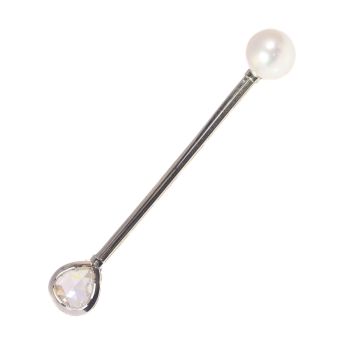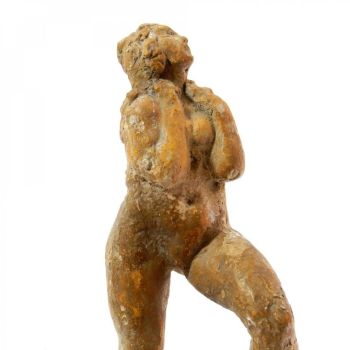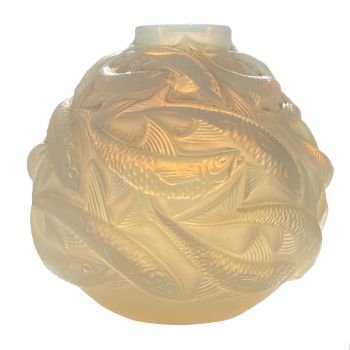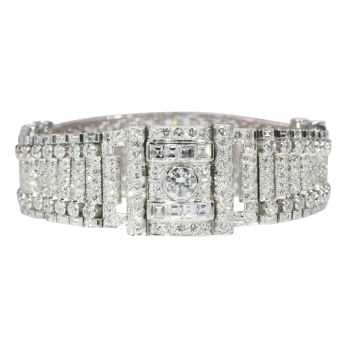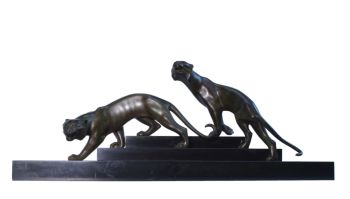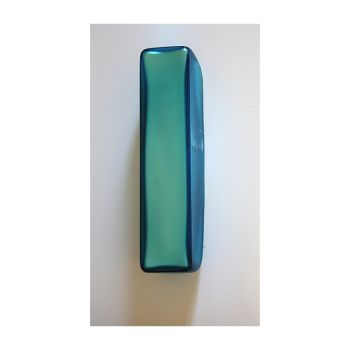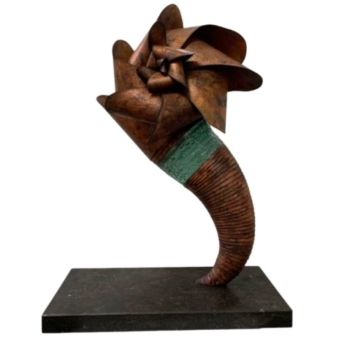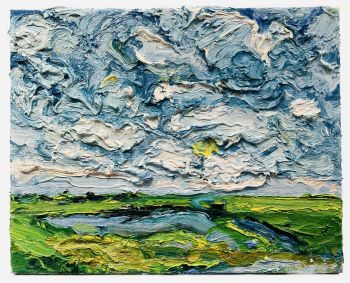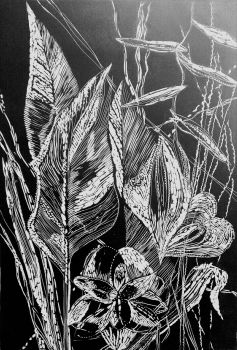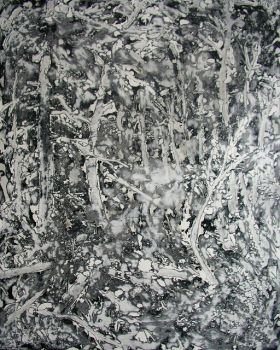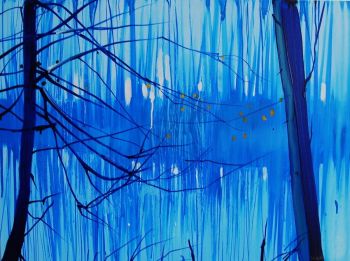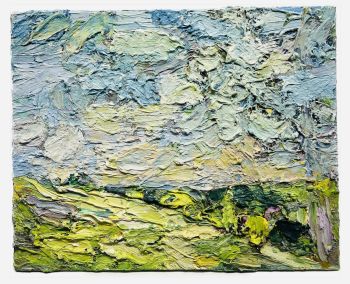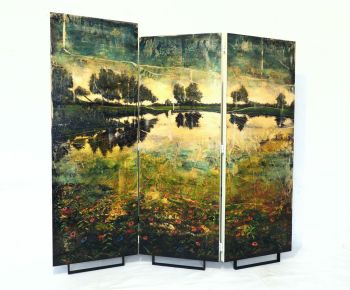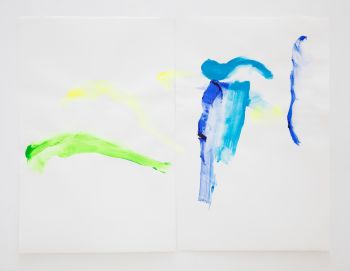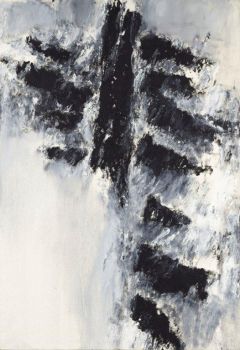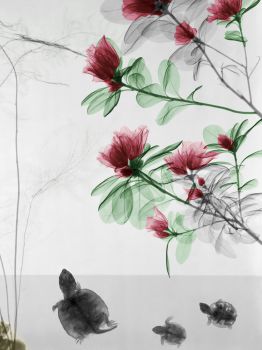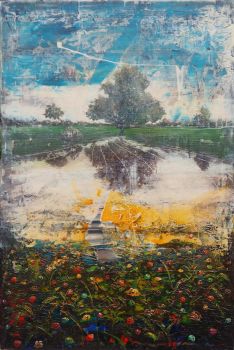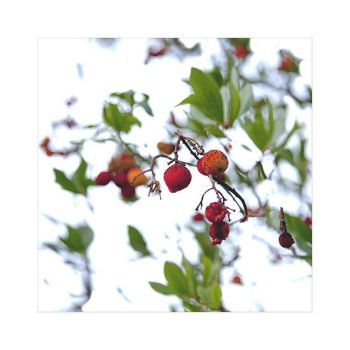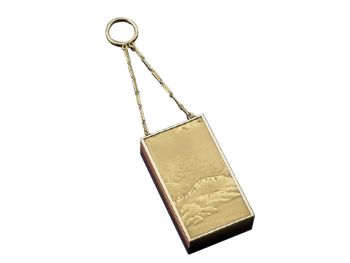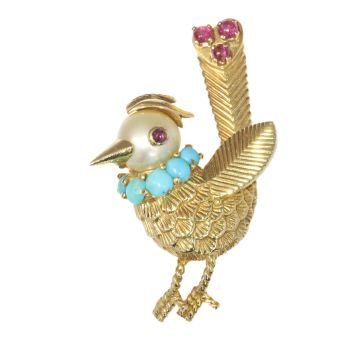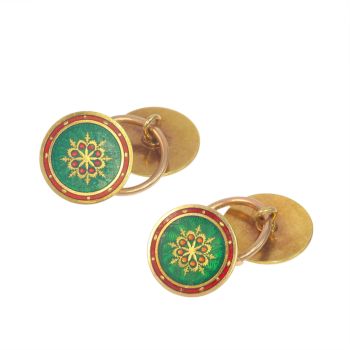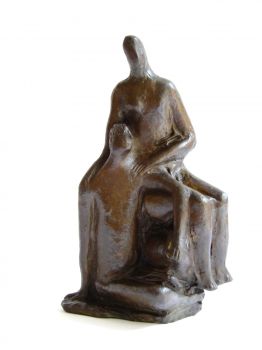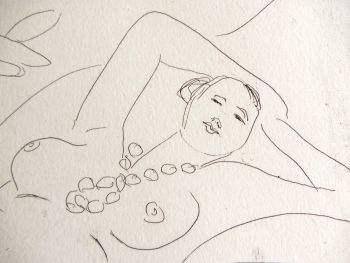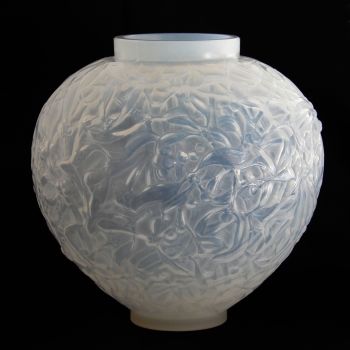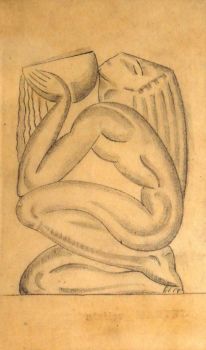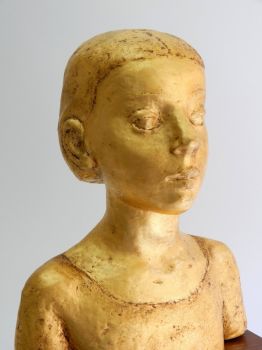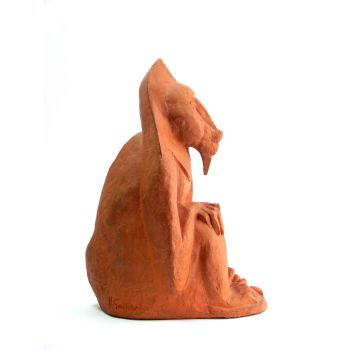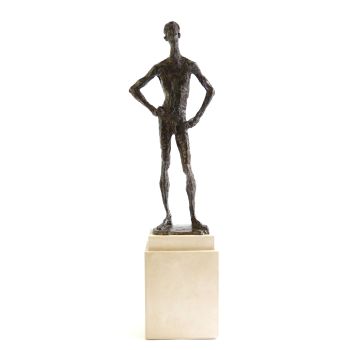Vase with enamel landscape 1927 - 1928
Marcel Goupy
Émail
18 cm, ø 20 cm
ConditionMint
Prix sur demande
Dille Art
- Sur l'oeuvre d'artBeautiful, spacious vase by the French glass artist Marcel Goupy (Fr. 1886-1954). In this period, Goupy was working on various glass techniques, this vase is made of a double layer of clear glass, in addition, Goupy painted the vase with enamel.
He has opted for a landscape with various stylized trees, such as cypresses, birches and deciduous trees, which are in turn lined with gold, which in the distance is reminiscent of the age-old cloisonné technique.
The simplicity of the shape with the slightly flared neck also makes it a stylish and timeless design. Around 1928 this form was very modern.
At the time, the vase was sold at the renowned Galerie Rouard in Paris, the permanent gallery of Marcel Goupy, in addition, Goupy always exhibited at the various Paris Salons, the Contempora Exhibition in New York, 1929 and the World Exhibitions.
The vase is signed on the bottom in black with 'M. Goupy'.
Biography:
Marcel Goupy (France, 1886-1954), Painter, ceramist and decorator of glass, crystal and designer, was originally trained as an architect at the l'École des Arts décoratifs in Paris.
He lived and worked in Paris and had his own studio. He designed sets and decorated porcelain (Théodor Haviland), earthenware sets (Belgium) as well as crystal and glass. In 1909 he came into contact with Georges Rouard, for whom he also started designing. He exhibited for several years at the Salon d'Automne and in 1929 at the Contempora Exhibition in New York.
In 1914 he made his first enamel works on glass. His enamel decorations on glass were very successful and popular. In 1909, the gallery owner Georges Rouard, at 34 Avenue de l'Opera, started a gallery in the old house À la Paix. Marcel Goupy was paired with Jules Mabut and together they created beautiful artglass. The gallery contracted him and other artists such as Jean Luce, Auguste Heiligenstein (Auguste Heiligenstein first worked as an assistant to Marccel Goupy.), Maurice Marinot, Henri Navarre, André Thuret, Georges Despret and François-Emile Décorchemont.
Throughout his life, Goupy has remained associated with the Rouard gallery. He also exhibited there permanently. After the death of Georges Rouard in 1929, Marcel Goupy became artistic director of Galerie Rouard.
His production included many stylized plants and flowers, but he also painted animals and people, all with the use of enamel. He designed almost small paintings of enamel that also matched the shape of the glass.
He perfected his techniques by also working the glass with colour powders and working ton sur ton. His work was always harmonious and surprising.
He participated in all the major events of his time, such as the Exposition Internationale des Arts Decoratifs in 1925, where he was also one of the jury members for the glass section.
His work is very wanted internationally and can be found in various museum collections, for example in the Musée des Arts Décoratifs (MAD) in Paris.
Literature:
- Philippe Olland; "Dictionnaire des Maîtres Verriers de l'Art Nouveau á l'Art Déco" Marques & signatures, pagina 166 en 167. Éditions Faton 2016.
- Alastair Duncan;"Art Deco Complete", pagina 383. Thames & Hudson Ltd, London 2009.
- Victor Arwas, 'Glass, Art Nouveau to Art Deco', Academy Editions London 1987.
- 'Wat is art nouveau & art deco waard', deel I&II, redactie Rob Zeegers Janny Stuurman-Aalbers en Reinold Stuurman, Uitgeverij Scriptum Art, Schiedam, NL and Snoeck-Ducaju & Zoon, Gent, België, 2001. Part II, p. 132 and 322.
Condition:
Very nice condition, a few minor light scratches , because of age and use. - Sur l'artiste
Marcel Goupy (France, 1886-1954), Peintre, céramiste et décorateur de verre, cristal et designer, a d'abord suivi une formation d'architecte à l'Ecole des Arts décoratifs de Paris.
Il a vécu et travaillé à Paris et avait son propre atelier. Il dessine des services et décore la porcelaine (Théodor Haviland), les services en faïence (Belgique) ainsi que le cristal et le verre. En 1909, il entre en contact avec Georges Rouard, pour qui il commence également à dessiner. Il expose pendant plusieurs années au Salon d'automne et en 1929 à l'exposition Contempora de New York.
En 1914, il réalise ses premières œuvres d'émail sur verre. Ses décorations en émail sur verre sont très réussies et appréciées. En 1909, le galeriste Georges Rouard, au 34 avenue de l'Opéra, ouvre une galerie dans l'ancienne maison la Paix. Marcel Goupy a été jumelé à Jules Mabut et ensemble ils ont créé de belles œuvres. La galerie l'engage ainsi que d'autres artistes tels que Jean Luce, Auguste Heiligenstein (Auguste Heiligenstein travaille d'abord comme assistant de Marccel Goupy.), Maurice Marinot, Henri Navarre, André Thuret, Georges Despret et François-Emile Décorchemont.
Toute sa vie, Goupy est resté associé à la galerie Rouard. Il y expose également en permanence. Après la mort de Georges Rouard en 1929, Marcel Goupy devient directeur artistique de la Galerie Rouard.Sa production comprend de nombreuses plantes et fleurs stylisées, mais il peint aussi des animaux et des personnages, tous à l'émail. Il a conçu des peintures presque petites d'émail qui correspondaient également à la forme du verre. Il perfectionne ses techniques en travaillant également le verre avec des poudres de couleur et en travaillant aussi le ton sur ton. Son travail était toujours harmonieux et surprenant. Il participe à tous les grands événements de son temps, comme l'Exposition Internationale des Arts Décoratifs en 1925, où il est également l'un des membres du jury de la section verre.
Son travail est très apprécié à l'international et se retrouve dans diverses collections de musées, par exemple au Musée des Arts Décoratifs (MAD) à Paris.
Êtes-vous intéressé par l'achat de cette oeuvre?
Artwork details
Related artworks
- 1 - 2 / 2
- 1 - 4 / 24
Johann Loetz (Lötz) Witwe Klostermühle
Johann Loetz Witwe - Phänomen Genre 7773 – Orange1900 - 1910
Prix sur demandeAntiques Emporium
1 - 4 / 24- 1 - 4 / 24
- 1 - 4 / 24
- 1 - 4 / 12












